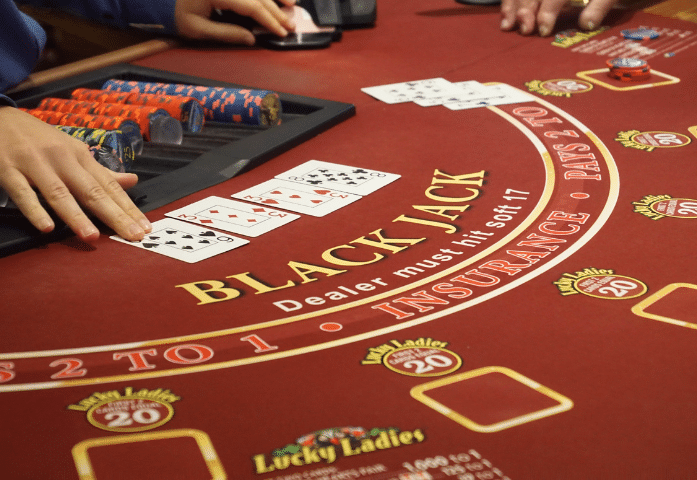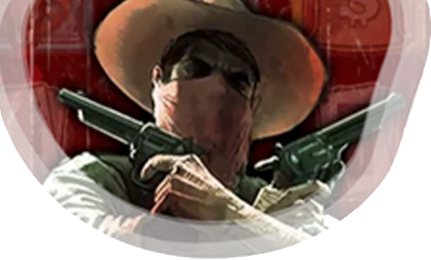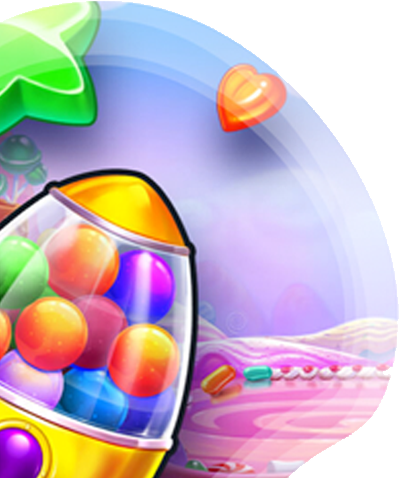August 13, 2021
Blackjack Terms Explained: A Glossary

If you’re just getting familiar with blackjack, you might not know all the lingo just yet. Check out our list of terms to help you on your way!
Blackjack has a long past, with plenty of terminology to go along with that history. If you’re new to the game, then these terms might seem a bit confusing to you.
As part of our ultimate guide to blackjack, we’re going to provide a deep dive into common (and maybe not-so-common) phrases and slang that you may come across when playing the game. Good luck!
0-9
21
Another name for the game of blackjack, as players are trying to get their hands to total 21 without going over that number.
86’d
When you’ve been asked to leave the casino. This won’t happen in New Jersey casinos, but it could happen in other states. This can be the result of being too obvious with card counting, and the casino is concerned about losing too much money.
A
Ace
This is an important card in blackjack because it can be valued at either a 1 or 11. Usually it’s assumed that an ace in your hand is valued at 11 until your current hand would exceed 21 — then it reverts to a 1.
Advantage
The statistically theoretical edge that one side has over the other. It’s usually expressed as a percentage, like 2%. In games like blackjack, the advantage can shift from the dealer to the players depending on what cards have already been dealt and which ones remain in the deck.
Anchor Player
The player seated on the far left of the table, to the immediate right of the dealer. This is the final player to act before the dealer resolves their hand. Also known as Third Base.
B
Back Counting
A technique wherein a player stands and watches the blackjack table without actively playing. Instead, they are keeping count of the cards with the intent of entering the game when the advantage has solidly moved into the players’ favor.
Balanced Counting System
Any card counting system in which there’s an exact balance between positive cards and negative cards. If you were to total up the card-count values of all 52 cards in a deck and your final number is zero, you’re dealing with a balanced count system.
Bankroll
The amount of funds you’re willing to spend at the casino in a given period of time.
Basic Strategy
A set of player decisions that provide the mathematically optimal way to play each hand (hit, stand, etc.). These decisions are based on the players’ cards and the dealer’s face-up card.
Bet Spread
The ratio between the minimum bet to the maximum bet. A 1-5 bet spread means that the player bets a minimum of 1 unit per hand and a maximum of 5 units per hand. The bigger the spread, the more money you generally expect to make.
Betting System
A strategy that changes how much or how little a player bets depending on whether their most recent hand has won or lost. Some are positive progression while others use negative progression.
Black Chip
A black-colored casino chip usually has a value of $100.
Blackjack
The best possible hand you can get in the game. It happens when your first two cards consist of an ace and any 10-value card (10, jack, queen, or king). The payout is 3 to 2.
Box
The area in front of the player where you place your chips as your bet.
Brown Chip
A $5,000 chip.
Burn Card
After the dealer shuffles and cuts the deck, they’ll usually take the first card and place it face-down in the discard tray. This way the first player can’t possibly know what the first card will be (which would otherwise affect how they bet).
Bust
If your hand total goes over 21, you bust. This means that you lose your wager.
C
Card Counting
A strategy that players can use to keep track of which cards have already been played from the deck. This lets the card counter predict whether high-value cards or low-value cards are more likely to be dealt out next and bet accordingly.
Chips
The tokens that players use on the table to make a wager. Players don’t play physical cash.
Continuous Shuffling Machine
An automatic shuffling machine that randomly mixes in the discards with the remaining cards after each hand. This is used to try to deter card counting.
Cut Card
A plastic card that a player inserts into the recently shuffled shoe of cards to determine where the dealer will cut the decks. When the cut card appears during a hand, that hand is completed and the cards are reshuffled.
D
Deck
A single set of 52 cards. Games of blackjack can be played with a single deck (which is rare) but more commonly with four to eight decks combined together in a shoe.
Deck Penetration
The percentage of cards that have been played from a deck or shoe before being reshuffled. The larger this percentage is, the more accurate any card counting tactics will be.
Discard Tray
A piece of clear plastic that holds all of the used cards that have already been played.
Double Down
After receiving your first two cards, you have the option to make a secondary wager if you feel that your hand is favorable enough to do so. You can wager up to 100% of your initial bet in exchange for receiving only one more card.
Down Card
The dealer’s second card, which always begins face-down.
Draw
To receive another card into your hand.
E
Early Surrender
To give up on your hand after you receive your first two cards but before the dealer checks their own hand for blackjack. You lose only half of your bet if you do this. This is rarely allowed in casinos.
Elimination Tournament
A type of blackjack tournament in which the players with the most chips on each table after a round advances to the next table. Remaining players are eliminated from the tournament.
Even Money
When you have blackjack and the dealer has an ace as their upcard, you can opt for even money instead of the typical 3 to 2 payout on blackjack as a type of insurance. If the dealer also has blackjack, the hand is a push but you at least receive your original bet back. If the dealer doesn’t have blackjack, you also still end up receiving back the value of your original bet.
F
First Base
The player spot that’s located to the dealer’s left. This is the first player to receive cards from the deck.
Flat Betting
When you bet the same amount of money on every wager rather than increasing or decreasing your amount based on any perceived advantage. It’s considered to be a very safe method of betting because it’s less risky, but it also lessens your likelihood of a big payout.
G
Green Chip
A $25 chip.
H
Hard 17
The value at which a dealer will almost always stand. This means that their hand contains no ace and totals 17.
Hard Hand
A hand that contains no ace, or there is an ace but it’s valued at 1. This means the hand’s value is set and not malleable.
Heads Up
When you’re playing alone against the dealer.
High Roller
Someone who makes large wagers.
Hi-Lo
A popular card counting system. It is a balanced count system.
Hit
When you ask the dealer to deal another card into your hand. If that extra card brings your hand’s total over 21, then you bust.
Hit 17
A rule that requires the dealer to hit on all 17s, including a soft 17.
Hole Card
The dealer’s face-down card. Also called the down card.
House
Another name for the casino.
House Edge
The percentage of money that the casino can expect to take in profits from your wagers over a course of time.
I
Insurance
When the dealer has an ace as their up card, that means they have the possibility of getting blackjack. You can choose to place a side bet of up to 50% of your original bet. If the dealer does have blackjack, they’ll pay off that insurance bet at 2 to 1 even though they beat your hand. If the dealer doesn’t have blackjack, you lose the insurance bet but may still win the hand if you don’t bust.
L
Late Surrender
After the dealer checks their own hand for blackjack, you can opt out of the rest of the round and forfeit half of your bet. This is more commonly allowed than early surrender.
M
Martingale
A commonly used betting system in blackjack. It’s a negative progressive system in which the player doubles their wager after a losing hand and returns to their initial bet following a winning hand.
N
Natural
Another term for hitting blackjack.
Negative Count
When you’re card counting and the total in your head is below zero. This means the game is currently in the house’s favor.
Negative Progression
A betting system to try to make more money. For negative progression, the player decreases their wager when they win a hand and increases their wager when they lose a hand.
P
Paint
A picture card, also known as a face card. These are all valued at 10 in blackjack.
Pair
When your initial hand has two equal-value cards. You can split a pair into two hands, making a secondary wager and playing both against the dealer.
Pink Chip
A $2.50 chip.
Positive Count
When you’re card counting and the total in your head is above zero. This means the game is currently in the players’ favor.
Positive Progression
A betting system to try to make more money. For positive progression, the player increases their wager when they win a hand and decreases their wager when they lose a hand.
Progressive Betting
A betting system based on whether the most recent hand won or lost. See positive progression and negative progression.
Purple Chip
A $500 chip.
Push
A tie between the player and the dealer, in which both hands have the same total below 22. You don’t lose your wager — instead, your bet will be returned to you.
Q
Quarter
Another name for a $25 chip.
R
Red Chip
A $5 chip.
Round
A round begins with no cards on the table, and the players place their bets. A hand gets dealt to every player and then the dealer. The round ends when all hands have been played through and all bets have been paid out.
Running Count
The ongoing total value of the cards you’ve been counting.
S
Shoe
A device that holds typically four or more decks of cards at once. The dealer pulls cards from the shoe one at a time.
Shoe Game
A blackjack game that’s dealt from a shoe.
Soft 17
When the dealer’s hand totals 17 but contains an ace.
Soft Hand
A hand that contains an ace, which can be valued at 1 or 11. This means the hand’s value is malleable before an 11 would force the hand to bust.
Split
The option to bet your original amount again and split up a pair of cards into two separate hands. Typically, a player can split up to four times in one round.
Stand
When you feel like you shouldn’t take any more cards for fear of going over 21. This means that you won’t take any more cards during this hand.
Stand 17
A rule that requires the dealer to stand on a soft 17. Compare this to the hit 17 rule.
Surrender
The option to forfeit half of your wager if you think you can’t beat the dealer. See early surrender and late surrender.
T
Third Base
The player spot that’s located to the dealer’s right. This is the last player to receive cards from the deck. Also known as the Anchor Player.
Toke
A tip for the dealer. Tipping is not required but is polite.
True Count
When card counting, this is the running count divided by the number of remaining decks in the shoe. This helps you to get a more accurate sense of the count per deck to make better predictions.
U
Unbalanced Counting System
Any card counting system in which there is not an exact balance between positive cards and negative cards. If you were to total up the card-count values of all 52 cards in a deck, your final sum would not equal zero.
Up Card
The dealer’s first card, which always begins face-up.



